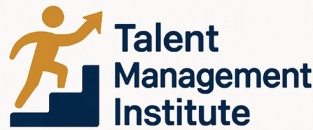
Understanding the Importance of Interview Feedback
The Value of Feedback in Interviews
Understanding the significance of interview feedback is a pivotal aspect of any thorough hiring process. Feedback not only aids in enhancing a candidate's skills but also strengthens the employer brand by demonstrating a commitment to transparency and development. By providing specific feedback candidates can use to grow, companies can improve candidate experience and better align their teams with the organization’s goals.
For hiring managers, delivering feedback, whether positive or constructive, is crucial in refining the interview process and ensuring the right fit for the role. It helps organizations ensure that every candidate, even unsuccessful candidates, leaves the process with a clear understanding of their performance and areas for improvement. Such practices not only boost the morale of candidates but also equip them with insights necessary for future interviews. More importantly, it solidifies the company’s reputation as an employer who values communication skills and problem-solving capabilities in potential recruits.
This approach ensures that the best practices in talent management are employed throughout an organization. For more insights on how to effectively implement strategies in talent acquisition, you can check insights and strategies for effective talent acquisition at effective talent acquisition.
Key Elements of Constructive Feedback
Essential Aspects for Delivering Constructive Feedback
Providing feedback to candidates post-interview is a fundamental part of the hiring process. It not only enhances the candidate experience but also aligns with the company’s talent management goals. Constructive feedback highlights the strengths and areas for improvement in a manner that is supportive and informative. When giving feedback interview notes, keep the following elements in mind:- Clarity and Specificity: Clearly articulate your observations and provide specific examples where applicable. For instance, you could mention a candidate's problem-solving approach during a technical role assessment, ensuring the feedback is meaningful and actionable.
- Balanced Approach: Present positive feedback alongside areas for improvement. Highlight the candidate's strengths — such as strong communication skills or role-specific knowledge — while also explaining aspects that can be enhanced for future interviews.
- Support Development: Encourage a growth mindset by suggesting resources or strategies that candidates can use to improve performance. This helps unsuccessful candidates see the feedback as a chance to develop their skills further.
- Timeliness: Provide feedback in a timely manner. Delays not only reduce its impact but can also affect the candidate's perception of the company's efficiency and respect for their time.
- Objectivity: Base feedback on performance and specific criteria related to the job, rather than personal impressions. This reinforces the company’s employer brand as fair and professional.
Examples of Positive Interview Feedback
Providing Encouragement Through Positive Feedback
Positive feedback plays a crucial role in creating a welcoming experience for candidates. It not only helps in building a strong employer brand but also encourages candidates by highlighting their strengths. An essential aspect of this process is using specific examples related to the job role and the skills assessed during the interview. Recognizing a candidate’s strong communication skills, problem-solving abilities, and team collaboration during their interview can significantly influence their perception of your company. Positive feedback can be communicated effectively by:- Acknowledging the candidate's ability to address complex questions with clarity and confidence.
- Complimenting their in-depth knowledge and understanding of the industry or specific job role.
- Praising their potential to be an asset to the team based on their performance.
Examples of Constructive Criticism in Interview Feedback
Communicating Constructive Observations
Providing feedback can be challenging, especially when it involves constructive criticism. However, approaching it with the intention to help the candidate grow and improve is crucial. When feedback focuses on specific examples related to the job role, it not only becomes more helpful, but also gives the candidate clear insights into areas where they can enhance their skills. Constructive feedback should focus on key aspects like problem-solving abilities, communication skills, and overall candidate performance during the interview. It is important to recall instances from the interview process where the candidate either struggled or failed to meet the expectations for the role. These observations, paired with suggestions for improvement, guide them towards better performance in future interviews.- Be direct but compassionate. Acknowledge the candidate's potential and highlight the constructive criticism in a way that emphasizes professional growth. For instance, "While your communication skills have room for improvement, your enthusiasm and ability to learn quickly suggest a great potential for future roles."
- Offer actionable advice. Instead of vague suggestions, provide specific examples where the candidate can improve. It might be related to how they can approach problem-solving scenarios or enhance their communication during interviews. For example, "Consider practicing situational interview techniques to improve how you articulate your problem-solving process."
- Balance negative points with positive feedback. To ensure that the candidate receives the feedback productively, balance the areas for improvement with acknowledgment of their strengths. Expressing appreciation for their time and effort can enhance the candidate experience and positively reflect on your company's employer brand.
- Focus on facts rather than personal traits. It’s important to keep the feedback objective and based on observable performances during the interview. This not only makes the feedback fairer but also maintains a professional tone.
Common Pitfalls to Avoid in Interview Feedback
Avoiding the Common Mistakes in Interview Feedback
Providing effective interview feedback is crucial, yet it's a process often riddled with potential pitfalls. Avoiding these common mistakes can ensure candidates receive fair and constructive input, enhancing their future performance in interviews and career growth.- Lack of Specificity: Providing vague feedback like "lacking in some areas" is unhelpful. Use specific examples to clearly articulate areas of improvement. For instance, instead of saying a candidate has communication issues, specify instances where communication could have been stronger.
- Overemphasis on Negatives: While it's essential to address areas for improvement, focusing solely on negatives can demotivate a candidate. Balance the feedback by incorporating positive feedback, recognizing skills or experiences that align well with the role.
- Generalized Feedback: Avoid using overly general statements. Tailor the feedback to the specific role and context of the interview process. For example, highlight specific job-related skills that were either well-exhibited or need enhancement.
- Ignoring the Candidate's Perspective: An effective feedback process considers the candidate’s experience. Ensure the feedback is delivered in a way that supports a positive candidate experience, leaving room for them to ask questions or provide additional input.
- Delaying Feedback: Timing is crucial. Providing feedback weeks later can lose relevance and impact. Strive to give feedback promptly, ideally within a few days of the interview.
- Lack of Constructive Tone: Offer recommendations in a constructive manner. Constructive feedback not only addresses problem-solving and communication skills but supports the candidate's development for future interviews.
Implementing a Feedback Culture in Talent Management
Fostering a Feedback-Oriented Culture
Implementing a feedback culture in talent management is essential for continuous improvement and development. This involves creating an environment where feedback is not only welcomed but also actively sought by all members of the organization. Here are some strategies to cultivate such a culture:
- Encourage Open Communication: Promote an atmosphere where candidates and employees feel comfortable sharing their thoughts. This openness can lead to valuable insights into areas for improvement in the hiring process and beyond.
- Regular Training: Equip hiring managers and team leaders with the skills needed to provide constructive feedback. Training sessions can include specific examples of both positive feedback and constructive criticism, ensuring that feedback is delivered effectively.
- Integrate Feedback into the Process: Make feedback a regular part of the interview and hiring process. By consistently providing feedback to candidates, you can enhance the candidate experience and improve your employer brand.
- Utilize Technology: Implement tools that facilitate feedback collection and analysis. This can help track candidate performance and identify areas for improvement over time.
- Lead by Example: Encourage leaders to model feedback behaviors. When leaders actively seek and provide feedback, it sets a standard for the rest of the company.
Benefits of a Feedback Culture
Creating a feedback-oriented culture offers numerous benefits:
- Improved Performance: Regular feedback helps individuals understand their strengths and areas for improvement, leading to enhanced performance over time.
- Enhanced Communication Skills: Both giving and receiving feedback can improve communication skills, which are crucial for effective teamwork and problem-solving.
- Stronger Employer Brand: A company known for its commitment to feedback and development is likely to attract top talent, enhancing its reputation in the job market.
- Better Hiring Decisions: By incorporating feedback into the hiring process, companies can make more informed decisions about candidates and the roles they are best suited for.
By prioritizing feedback in your talent management strategy, you not only improve the candidate experience but also foster a culture of growth and continuous improvement.













